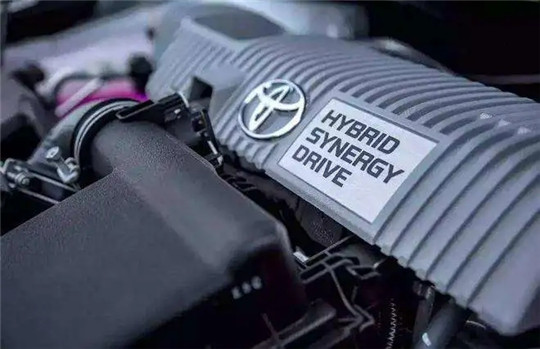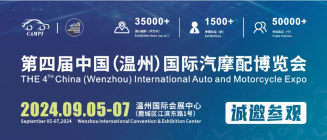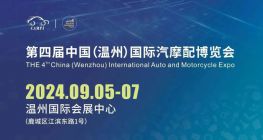This time, it is directly providing a complete system, which used to be open patented technology or partial technology. You know, if car companies want to convert patented technologies into systems and put them into large-scale commercial use, some thresholds are needed.
According to Nihon Keizai Shimbun, Toyota will provide GAC Group with the core system of hybrid vehicles. It is worth noting that this is also the first time Toyota has sold hybrid vehicle technology to overseas companies.
It is reported that BluE Nexus, a Japanese company that develops and supplies hybrid vehicle power systems, has reached an agreement with GAC Group on technology transfer. BluE Nexus is a joint venture established by Toyota, Denso and Aisin Seiki.
Insiders of GAC Group said that this news has not yet been officially announced, but it is certain that GAC Group's hybrid products using Toyota's THS system will be launched in 2021 at the latest. In terms of hybrid power, GAC Group will develop two routes in parallel. One route is jointly developed with Toyota; the other route is the use of the G-MC system independently developed by GAC Group. This system can not only meet the requirements of hybrid power, but also Can meet plug-in hybrid power. So far, Toyota has not commented on this.

In fact, to a certain extent, this is not the latest "news", because Toyota's hybrid technology has been "learned" by Chinese car companies, such as Corun. In addition, we know that Toyota has previously opened patents in the field of new energy. Compared with before, what is the difference between Toyota's provision of hybrid technology to GAC? Generally speaking, this time it is directly providing a complete system, which used to be open patented technology or partial technology. You know, if car companies want to convert patented technologies into systems and put them into large-scale commercial use, some thresholds are needed.
It is true that the GAC Group, which is supported by Toyota's technology, can take the lead in reaping the dividends in the hybrid technology market in principle. However, as Cui Dongshu, Secretary-General of the Passenger Association, said, facing the future industrialization, GAC still needs to do a lot of work. On the other hand, as Toyota, which has advantages in hybrid technology, deepening cooperation with its Chinese partners will usher in more benefits. For example, it will encourage Chinese car companies to pay more attention to hybrid technology and boost Toyota's share in China.

In the early stage of the development of new energy, there was always a sentence lingering over this new blue ocean, "There are two types of hybrids in the world, one is Toyota hybrids, the other is the other." As we all know, as the world's first to enter the alternative One of the automakers in the energy field, Toyota has an absolute lead in hybrid technology. Since the launch of the Prius in 1997, Toyota has sold more than 15 million electric vehicles worldwide and has maintained a record of zero battery accidents.
As the protagonist of this cooperation, Toyota has gradually opened up core hybrid vehicle technologies to other manufacturers after holding on to it for many years. In April last year, Toyota Motor Corporation announced that it plans to open approximately 23,740 patents related to electric vehicles such as hybrid vehicles for free during the year. However, there was a precedent for Toyota to open patents free of charge, and it was not the first in the automotive field. Earlier, in January 2015, Toyota announced the opening of 5,680 patents for hydrogen fuel cell technology, although so far there have been very few "landing".
The reason is that one of the most important points is that the industry has forced technology sharing to become an important choice for technological route duel. At present, the competition among enterprises for the technological trend of the future automobile industry has entered a fierce stage. Multiple technological routes have become the norm of competition in parallel, and the market’s choice of technological routes takes more into account the maturity of the market and supply chain. Like Tesla's opening of all electric vehicle patents at the end of 2018 and Volkswagen's announcement of the opening of the MEB platform in March 2019, Toyota's sale of hybrid technology to Guangzhou Automobile is also to seize more technology market share for hybrid technology that has been controlled for many years. , In order to continue to maintain a leading position in the future transformation of automotive technology routes.

Obviously, the deepening of cooperation with GAC this time is not only because of its relationship with GAC, but also because of Toyota's 2030 plan. In 2017, Toyota announced an important time node for the popularization of electrified vehicles by 2030, that is, among the new vehicles sold in 2030, HEV and PHEV models will exceed 4.5 million, and EV and FCEV will exceed 1 million. In short, the total number of electric Toyota vehicles will exceed 5.5 million. But later, in order to cater to the policy, Toyota advanced this goal by about 5 years, that is, the total number of electrified vehicles in 2025 will exceed 5.5 million.
If you want to achieve this goal, you must not do without the Chinese market, the world's largest single market. Choosing to work together with GAC will not only help Toyota reach its sales target for electrified models more quickly, but also use GAC to expand its market share of hybrid systems and attract more cooperation. Nikkei also mentioned in the report that this year, Toyota has tried to boost its market share in China by improving its new energy product camp.

Not only Toyota, but other Japanese car companies are also increasing their efforts in the Chinese market. At this Beijing Auto Show, Nissan CEO Makoto Uchida once stated that China is one of Nissan's very important core markets and emphasized that this is not a new point of view raised by Nissan. "We have always regarded China as the core market, and we will continue to invest in the future." Recently, Nissan officially released the e-POWER hybrid system in China, and revealed that this latest Nissan hybrid system will be the first to be installed in Sylphy on.
Also in June of this year, the government decided to position hybrid vehicles as "low-fuel-consumption vehicles" from January 2021 and give preferential policies. Prior to this, hybrid vehicles and fuel vehicles were considered the same category. As the largest market that accounts for 30% of the world's new car sales, the domestic policy change constitutes a "dongfeng" for the business of Japanese car companies, led by Toyota, and will also significantly affect the strategies of European and American car companies such as German Volkswagen and Chinese car companies. According to data provided by LMC Automotive, the proportion of hybrid vehicles in global car sales will increase from 7% in 2020 to 26% in 2030.

In essence, the market is the master of corporate behavior. The industry has always believed that the "evolution" of fuel vehicles to electric vehicles is gradually accelerating, and hybrid vehicles are just a transition. Nikkei proposed that in view of a series of changes in the automotive industry, the survival of Japanese automakers will depend on whether they can develop competitive pure electric vehicles while hybrid vehicles are still popular. Obviously, Toyota has also felt great crisis and pressure, so it should not be difficult to understand whether it is a strategy or a means in the transformation of auto companies to sell a complete hybrid system.
On September 5th, we invite you to join us at the Wenzhou Auto Parts Exhibition on a journey to trace the origin of the Auto Parts City, as per the invitation from the purchaser!
Hot Booking | AAPEX 2024- Professional Exhibition Channel for Entering the North American Auto Parts Market
The wind is just right, Qianchuan Hui! Looking forward to working with you at the 2024 Wenzhou Auto Parts Exhibition and composing a new chapter!
Live up to Shaohua | Wenzhou Auto Parts Exhibition, these wonderful moments are worth remembering!
Bridgestone exits Russia and sells assets to S8 Capital
Live Up to Expectations and Honor to End | 2023 Wenzhou International Auto Parts Exhibition Successfully Ends! Looking forward to meeting you in 2024!
Free support line!
Email Support!
Working Days/Hours!





